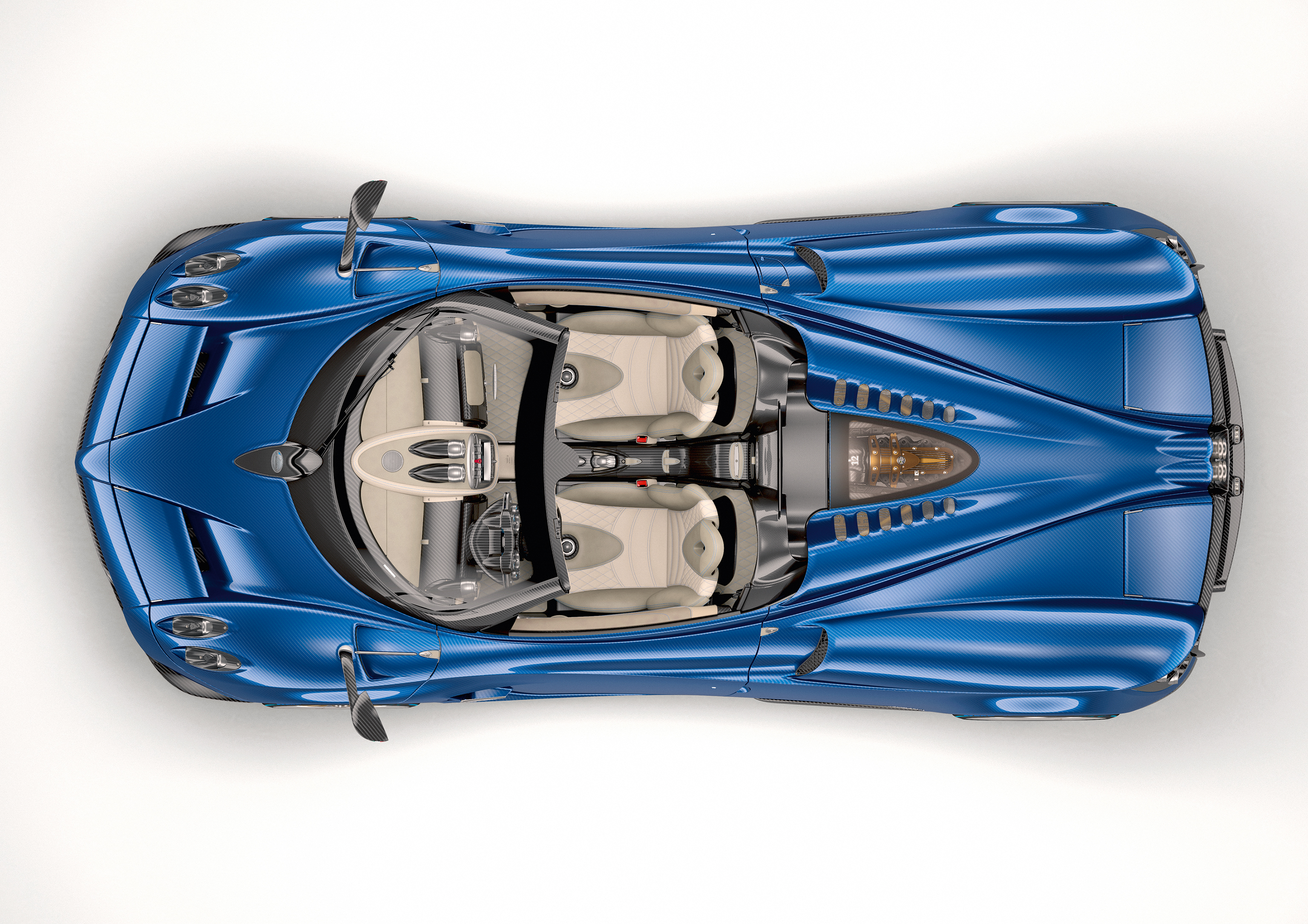Drop-Top Gorgeous! Pagani’s New Huayra Roadster Breaks Cover
Pagani Claims The Huayra Roadster Is Its Most Complicated Project Ever Taken On
Pagani, long-time maker of poster-worthy rides, has outdone itself yet again with the Huayra Roadster. In typical Italian style, Horacio Pagani himself describes the car:
“If we think of the Huayra Coupe as a personification of elegance and timeless lines,
the Huayra Roadster was to be the rebellious sister, shapely and beautiful,
but with a sharp edge for those who are careless.”
These are the types of words that get us excited about new Italian supercars, but what makes the Roadster different from the Coupe? That comes down to the details, and the fact that it is lighter.

ALSO SEE: Building the Bugatti Chiron at Molsheim
Using Carbo-Titanium and very expensive-sounding Carbo-Triax HP52, the roadster is claimed to have higher torsional rigidity, while weighing 175 lbs/80 kg less than the coupe.
Already, Pagani had claimed the Coupe was the lightest supercar on sale, but at 1280 kg, the Roadster will now move that crown to a different part of the family.
While the AMG-derived powerplant stays mostly the same, the roof is where the main changes have occurred. A carbon fiber panel can be installed, giving the look of a coupe, but a glass insert allows for bright interior illumination.
You’ll have to get creative with storage when this hardtop is off¬†the car. Carbon and fabric make up the soft top, which actually can be stored in the car. It is said to be easy to install, just in case you get a pesky rainstorm.
Changes are also seen in the suspension to account for the lighter weight and stiffer chassis. Pagani went as far as creating a new alloy for the Roadster’s suspension, naming it HiForg. Components are said to be about 25 percent¬†lighter than the Coupe variant.
CHECK OUT: The Iconic 240.1 MPH McLaren F1
Aerodynamics also needed attention, with focus on downforce for top-up applications, and lack of turbulence when the top is down. We’d have to imagine it would spend most of its time in that second configuration, and Pagani made the same assumption. Special attention was given to the roll hoops behind the driver, where the most turbulence¬†occurs.
In all, Horacio wants you to know this is a melding of art and science, and something¬†da Vinci¬†himself would find impressive. “We hope this six-year effort can get to touch you, rationally and emotionally.”
We hope so too, Mr. Pagani.
For those who want to drool over some stats, here’s what you need to know:
Engine: 5980cc AMG M158 V12 custom-built for Pagani
Power: 764 horsepower @ 6,200 rpm
Torque: 1,000nm (738lb/ft) at 2,400 rpm
Gearbox: 7-speed X-trac automatic
Weight: 1,280 kg
Cost: (est) $2,410,000





















